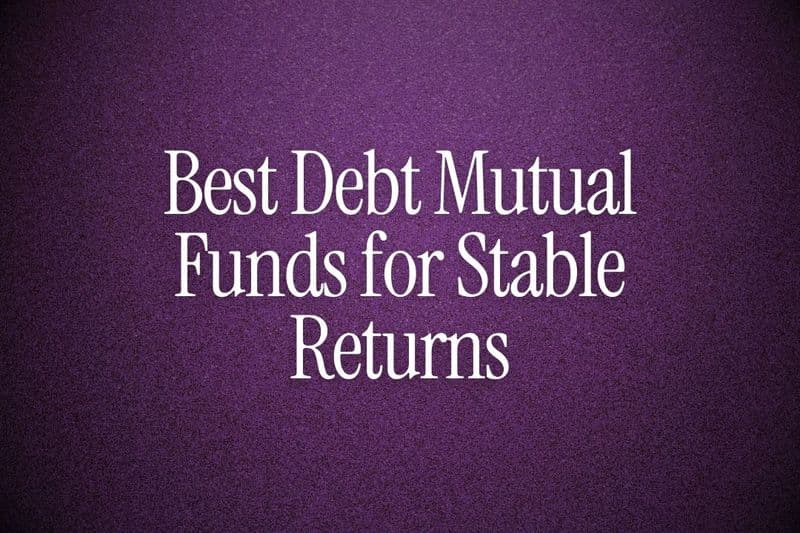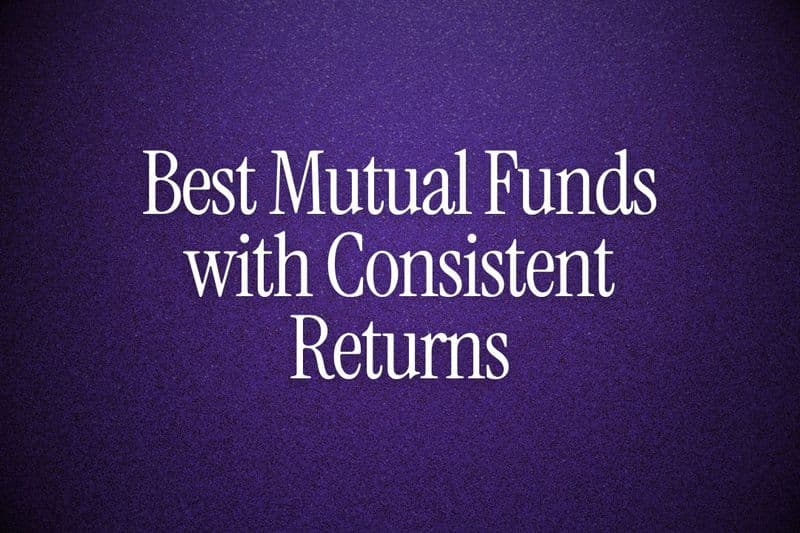
Rajesh, 42, has been working in Dubai for 15 years. He earns well, saves diligently, and has been putting money into NRE fixed deposits and mutual funds in India.
Last month, he sat down with a spreadsheet to see if he's on track to retire comfortably at 60. The numbers shocked him.
His ₹80 lakh corpus looked impressive - until he realized that TDS ate 30% of his NRO interest, the rupee had depreciated 25% against the dollar in 10 years, and inflation meant his expenses would triple by retirement.
He'd need ₹3.5 crore to maintain his current lifestyle, not ₹80 lakh.
"How do I build a retirement corpus that's tax-efficient, currency-hedged, and repatriable?" he asked in our WhatsApp community.
The answer isn't PPF (NRIs can't invest). It's not NPS (limited returns, lock-in, taxable). It's not traditional mutual funds (short-term capital gains tax, rupee risk).
The smarter answer for NRIs: GIFT City.
Over the past year, we've helped hundreds of UAE-based NRIs build retirement portfolios in GIFT City that are tax-free in India, denominated in USD, and fully repatriable.
This guide shows you exactly how to do it - from calculating your retirement corpus to choosing the right mix of USD fixed deposits, Alternative Investment Funds, GIFT City mutual funds, and bonds.
By the end of this article, you'll have a clear, actionable retirement plan that puts you ahead of 95% of NRIs.
Why Traditional Retirement Options Don't Work for NRIs
Before jumping into GIFT City, let's be honest about why the usual options fail NRIs.
PPF: NRIs Can't Invest (and Even if You Could, Returns Are Low)
Public Provident Fund is the go-to retirement product for resident Indians. Current interest rate: 7.1%, tax-free, 15-year lock-in.
Sounds great, except NRIs cannot open new PPF accounts. If you had one before moving abroad, it must be converted to non-operative status upon becoming an NRI, with no further contributions allowed. It earns interest until maturity (15 years from opening), and extensions are permitted with interest but no contributions. (source)
Even if you could invest, 7.1% in rupees doesn't protect you from currency depreciation. The rupee has dropped from ₹60 to ₹84 per dollar over the past decade - a 40% decline. Your "tax-free" 7.1% return in rupees actually lost value in dollar terms. Read more about PPF rules for NRIs.
NPS: Lock-In Until 60, Taxable Withdrawals, Mediocre Returns
National Pension System is India's government-sponsored retirement scheme. NRIs can invest, but there are serious limitations:
Lock-in until age 60: You can't access your money before retirement, even in emergencies.
Taxable withdrawals: 60% of the corpus is available as lump sum (taxable as per your slab), and 40% must be used to buy an annuity (also taxable). So much for tax-free retirement.
Market-linked, not market-beating: NPS equity funds return 9-12% historically, lagging index funds. Debt funds return 6-8%. Compare that to GIFT City USD deposits at 5-6% - with zero tax and zero currency risk.
No tax benefits for NRIs: Resident Indians get deductions under Section 80C and 80CCD. NRIs don't qualify because they're not assessed under the same tax rules.
Traditional Mutual Funds: Tax, Rupee Risk, and TDS Hassles
Many NRIs invest in Indian mutual funds thinking they're building a retirement corpus. The problems:
Short-term capital gains tax (STCG): If you redeem equity funds within a year, you pay 20% tax.
Long-term capital gains tax (LTCG): Equity funds above ₹1.25 lakh profit are taxed at 12.5%.
*Debt funds acquired post-April 1, 2023, irrespective of holding period are taxed at slab rates (up to 30% + cess) without indexation.
Rupee depreciation: Your returns are in rupees. If the rupee weakens, your purchasing power in dollars shrinks. This is a massive hidden tax.
TDS and compliance: If you're investing from an NRO account, TDS is deducted. You need to file Indian tax returns annually, claim DTAA relief, and deal with paperwork. See our NRI taxation guide.
FCNR Deposits: Better Than NRE, But Still Not Ideal
FCNR (Foreign Currency Non-Resident) deposits let you invest in USD, GBP, or EUR with Indian banks. Interest is tax-free, and principal is fully repatriable.
But FCNR has three big problems:
Lock-in for 1-5 years: Minimum tenure is 1 year. Premature withdrawal forfeits the entire interest.
Low returns: Most banks offer 4.5-5.5% on USD FCNR deposits. That barely beats inflation.
Limited flexibility: You can't switch currencies or adjust tenure mid-term.
Compare this to GIFT City USD deposits, which offer 5-6% interest, flexible tenures from 7 days to 5 years, and no interest forfeiture on premature withdrawal (only a small penalty).
👉 Tip: If you're still holding FCNR deposits, compare the rates with GIFT City USD deposits using our FD Rates Explorer. You might be leaving 1-2% annual returns on the table.
What Is GIFT City and Why It's a Game-Changer for Retirement Planning
GIFT City stands for Gujarat International Finance Tec-City. It's India's first International Financial Services Centre (IFSC), located between Ahmedabad and Gandhinagar.
Think of it as India's version of Dubai's DIFC or Singapore's financial hub - a special economic zone with unique tax and regulatory benefits designed to attract global investors.
Key Features That Make GIFT City Ideal for Retirement Portfolios
Tax-free interest income: Interest earned on deposits, bonds, and other instruments in GIFT City is completely tax-free in India. No TDS, no tax filing, no hassle.
DTAA and Gift city NRI relief provides zero or reduced capital gains tax for some:
- LTCG: 10% on IFSC-listed equity securities (>12 months, >₹1.25 lakh; Sec. 112A).
- STCG: 15% on IFSC-listed equity securities (≤12 months; Sec. 111A).
- Fund unit gains: Often exempt for NRIs (>12-24 months; Sec. 10(4D)) for Cat. I/II AIFs or specified funds. Cat. III AIFs taxed at fund level (10-15%), NRI distributions exempt.
- DTAA Relief: May reduce/eliminate Indian tax via credits in NRI’s resident country.
This applies to stocks, bonds, ETFs, and investment trusts under IFSCA regulations.
No GST, no transaction taxes: Transactions in GIFT City are exempt from GST, Securities Transaction Tax (STT), and Commodity Transaction Tax (CTT). This reduces costs significantly.
USD-denominated investments: You can invest in USD, EUR, GBP, AED, and other foreign currencies. No rupee conversion required, so you avoid currency depreciation risk.
Full repatriation: All funds in GIFT City are fully repatriable. You can move money in and out freely, with minimal documentation.
Regulated by IFSCA: The International Financial Services Centres Authority (IFSCA) regulates GIFT City with global standards. This ensures investor protection and transparency.
100% NRI ownership allowed: Unlike mutual funds in India (where NRI participation is capped), GIFT City allows 100% NRI ownership in funds and investment vehicles.
Sources: IFSCA, ICICI Bank GIFT City Investment Guide, HDFC Life GIFT City for NRIs
Who Can Invest in GIFT City?
NRIs, PIOs (Persons of Indian Origin), OCIs (Overseas Citizens of India), and foreign nationals can invest in GIFT City.
Exceptions: Residents of North Korea, Iran, Cuba, and a few other restricted countries cannot open GIFT City accounts.
👉 Tip: Use our Compliance Compass to check if you meet all eligibility criteria before starting your GIFT City investment journey.
How Much Do You Need to Retire? Calculating Your Retirement Corpus
Before building a portfolio, you need to know your target. How much money will you need at retirement to maintain your lifestyle?
The Simple Formula
Step 1: Calculate your current monthly expenses.
Let's say you spend $3,000/month today (including rent, groceries, utilities, entertainment, and discretionary spending).
Exclude expenses that will disappear after retirement (e.g., work commute, office lunches, kids' education if they're independent).
Add expenses that will increase (e.g., healthcare, travel, hobbies).
Adjusted monthly expense: $2,500.
Step 2: Factor in inflation.
Assume 4-5% annual inflation. If you're retiring in 20 years, your $2,500/month will need to be:
FV = PV × (1 + r)^n
FV = $2,500 × (1.05)^20 = $6,633/month
Step 3: Calculate corpus needed at retirement.
Your retirement corpus needs to last, say, 30 years after you retire at 60 (living until 90).
Assuming you can earn 5% annual return on your investments during retirement (from safe instruments like GIFT City USD FDs), you'll need a corpus that generates $6,633/month.
Annual requirement: $6,633 × 12 = $79,596
Corpus needed: $79,596 ÷ 0.05 = $1,591,920 (approximately $1.6 million)
If you're earning 6% on your corpus, you'd need: $79,596 ÷ 0.06 = $1,326,600 (approximately $1.33 million)
(Sources: ClearTax Retirement Calculator, PrimeInvestor Retirement Calculator)
Quick Reference Table: Corpus Needed Based on Monthly Expenses
Current Monthly Expense (USD) | Inflation-Adjusted Monthly Expense at Retirement (20 years, 5% inflation) | Corpus Needed (30-year retirement, 5% return) | Corpus Needed (30-year retirement, 6% return) |
|---|---|---|---|
$2,000 | $5,306 | $1,273,440 | $1,061,200 |
$3,000 | $7,959 | $1,910,160 | $1,591,800 |
$4,000 | $10,612 | $2,546,880 | $2,122,400 |
$5,000 | $13,266 | $3,183,840 | $2,653,200 |
Variables to Adjust
Life expectancy: If you expect to live until 85 instead of 90, your corpus requirement drops. Conversely, if you're in excellent health and expect to live until 95, you'll need more.
Return on investment: Higher returns during retirement reduce the corpus needed. GIFT City USD FDs at 5-6% are safe. Equity investments can yield 8-10% but come with volatility.
Inflation: Use 4-5% for conservative planning. If you're retiring in a high-inflation country, adjust upward.
Lifestyle changes: Will you downsize your home? Move to a lower-cost city? Travel more? Adjust accordingly.
Healthcare: Medical costs rise sharply after 60. Budget an extra 20-30% for healthcare, insurance, and emergencies.
👉 Tip: Don't rely on one calculator. Use 2-3 online retirement calculators (ClearTax, Groww, PrimeInvestor) and take the average. This gives you a realistic range rather than a single fixed number.
Tax-Free Investment Options in GIFT City for Retirement
Now let's explore the specific investment products available in GIFT City and how they fit into a retirement portfolio.
1. USD Fixed Deposits (The Foundation)
GIFT City USD fixed deposits are the cornerstone of any NRI retirement portfolio. They offer safety, liquidity, and tax-free returns.
Interest rates: 5-6% per annum (varies by bank and tenure).
Tenures: Flexible, from 7 days to 5 years. Unlike FCNR deposits (minimum 1 year), you can choose short-term deposits if you need liquidity.
Tax treatment: Interest is tax-free in India. No TDS, no tax filing required.
Premature withdrawal: Allowed, with a penalty (usually 0.25-0.50%). You don't forfeit the entire interest like in FCNR deposits.
Repatriation: Fully repatriable. No limits, no documentation.
Minimum investment: Varies by bank. ICICI GIFT City requires $1,000 minimum. IndusInd offers higher rates for balances above $100,000.
Banks offering USD FDs in GIFT City:
- ICICI Bank GIFT City
- HDFC Bank GIFT City
- Axis Bank GIFT City
- SBI GIFT City
- IndusInd Bank GIFT City
Compare current rates using our NRI FD Rates Comparison Tool.
(Sources: ICICI Bank GIFT City, Zerodha GIFT City Guide)
2. GIFT City Alternative Investment Funds (AIFs)
Alternative Investment Funds are pooled investment vehicles that invest in equities, debt, real estate, or other assets. Think of them as hedge funds or private equity funds.
GIFT City AIFs are regulated by IFSCA and offer several tax benefits.
Types of AIFs:
- Category I: Venture capital, angel funds, social impact funds. Tax-exempt for NRIs.
- Category II: Private equity, debt funds. Pass-through taxation (no fund-level tax).
- Category III: Hedge funds, derivatives, complex strategies. Tax-exempt for NRIs.
Tax treatment:
- Interest, dividends, and capital gains from AIFs are tax-free for NRIs.
- No requirement to file Indian tax returns if you invest solely through GIFT City AIFs.
- No PAN card required.
Minimum investment: High - typically $150,000 to $500,000. This makes AIFs suitable for high-net-worth individuals.
Returns: Variable. Equity AIFs can return 12-20% annually, but with higher risk. Debt AIFs return 7-10%.
Lock-in: Usually 3-5 years, depending on the fund structure.
Suitability: AIFs are for aggressive investors who can afford the high minimum and are comfortable with lock-in periods. Not suitable for conservative retirement portfolios unless you're diversifying a small allocation (10-15%).
Explore GIFT City AIFs on Belong.
(Sources: SBNRI GIFT City Tax Benefits, Investmates GIFT City Tax Benefits)
3. GIFT City Mutual Funds
GIFT City mutual funds are offshore funds launched by Indian asset management companies (AMCs) operating in the IFSC. They invest in global equities, debt, commodities, and derivatives.
Key features:
- Denominated in foreign currencies (USD, EUR).
- No TDS on dividends or redemptions.
- Global Market Access: Depends on the scheme; inbound funds invest in Indian equities, while outbound funds invest in equities abroad (e.g., access to US stocks, emerging markets, commodities).
- Regulated by IFSCA under international standards.
- 100% NRI ownership allowed (unlike mainland India funds, which cap NRI participation).
Tax treatment:
GIFT City's tax structure attracts international investors with significant tax benefits.
Category | Details |
|---|---|
Capital Gains Tax | Tax-free in India, but taxed in the country of residence. |
Dividend Income Tax | - 10% for NRIs (plus surcharge/cess, 0-15%). - Exempt for Cat. I/II AIFs or specified mutual fund distributions if taxed at fund level (Sec. 10(23FBA)). |
Tax Deducted at Source (TDS) | - Exempt for NRIs on dividends/capital gains. - No 20% deduction or refund issues. |
Income-Tax Exemption | - 100% exempt: OTC derivatives/offshore instruments (Sec. 10(4E), Finance Act 2025). - IFSC unit profits: 100% exempt for 10/15 years (Sec. 80LA). - Portfolio management income exempt via Offshore Banking Unit. |
Other Tax Exemptions | - Exempt from: GST, STT, CTT, Stamp Duty. - No state stamp duty for 10 years in aircraft leasing/financing/insurance. |
Interest Income | - Loans to IFSC units: Tax-free for NRIs (Sec. 10(4D)). - Rupee bonds on IFSC exchange: 9% withholding tax for NRIs. |
Sources: Income Tax Act Sections 111A/112A/80LA/10(4D), IFSCA Fund Management Regulations 2022 (Amended 2025), IFSCA Bulletin Q1 2025, Finance Act 2025 Memorandum, Mint Analysis (Sep 2025), GIFT CFO Tax Benefits (Sep 2025)
Minimum investment: $500.
Returns: Variable, depending on asset allocation. Equity funds can return 10-15%, debt funds 6-9%.
Suitability: For NRIs with high net worth who want global diversification and tax efficiency. Not suitable for conservative investors or those needing liquidity.
(Sources: Edelweiss GIFT City Funds, GoINRI GIFT City Funds)
4. GIFT City Bonds (Tax-Efficient Fixed Income)
Bonds listed on IFSC exchanges in GIFT City enjoy concessional tax rates and are ideal for conservative investors seeking fixed income.
Tax treatment:
- Interest on bonds listed on IFSC exchanges is taxed at 9% for NRIs (with no surcharge or cess), regardless of listing date, as per Finance Act 2023 amendments. (source)
- Still significantly lower than the 30% tax on NRO interest.
Types of bonds:
- Rupee-denominated bonds (issued by Indian corporates).
- USD-denominated bonds (issued by global entities).
- Government securities.
Returns: Typically 6-9%, depending on credit quality and tenure. (source)
Liquidity: Listed bonds can be sold on the exchange before maturity. Unlisted bonds are less liquid.
Minimum investment: Varies. Some bonds require $10,000 minimum, others $100,000.
Suitability: For conservative to moderate investors seeking fixed income with tax efficiency. Good for diversifying beyond USD FDs.
5. GIFT City Derivatives and Equity Investments
If you're comfortable with market risk and want higher returns, GIFT City offers access to derivatives and equities.
GIFT Nifty: The Nifty 50 index futures traded on NSE-IFSC in GIFT City. Open 20+ hours a day, allowing global investors to trade Indian equities in real time. Track it using our GIFT Nifty Live Tracker.
Tax benefits:
- Derivative income is tax-free for NRIs.
- Capital gains on transfer of specified listed securities are tax-exempt.
Risk: High. Derivatives are leveraged products and can result in significant losses. Not suitable for retirement portfolios unless you're an experienced trader.
Suitability: Only for aggressive investors with a high risk tolerance. Allocate no more than 5-10% of your retirement corpus to derivatives.
6. GIFT City Insurance (USD-Denominated Life and Health Insurance)
GIFT City also offers unique USD-denominated insurance policies with global coverage.
Products available:
- Life insurance (Tata AIA has launched globally valid USD life insurance).
- Health insurance (HDFC Life offers global USD health insurance).
Benefits:
- Premiums paid in USD.
- Coverage valid worldwide.
- Maturity proceeds tax-free (if premiums ≤ 10% of sum assured).
Suitability: Essential for retirement planning to cover healthcare costs and provide a safety net for dependents.
(Sources: HDFC Life GIFT City Insurance)
👉 Tip: Don't overlook insurance. Medical emergencies are the biggest risk to retirement corpus. A comprehensive USD health insurance policy from GIFT City ensures you're not forced to liquidate investments to pay hospital bills.
Building Your Retirement Portfolio: Asset Allocation Strategies
Now that you know the options, how do you allocate your retirement corpus across these instruments? Here are three model portfolios based on risk tolerance.
Conservative Portfolio (Low Risk, Stable Returns)
Who it's for: NRIs aged 50+, nearing retirement, who prioritize capital protection over growth.
Asset allocation:
- 70% GIFT City USD Fixed Deposits (5-6% return)
- 20% GIFT City Bonds (6-9% return)
- 10% GIFT City USD Savings Account (3-5% return, for liquidity)
Expected return: 5.5-6.5% annually.
Risk: Very low. Principal is protected, and all instruments are tax-free.
Rebalancing: Review annually. If bond yields rise, increase bond allocation. If USD FD rates improve, shift more to FDs.
Example: If you have $500,000:
- $350,000 in GIFT City USD FDs (earning $21,000/year)
- $100,000 in GIFT City Bonds (earning $7,500/year)
- $50,000 in GIFT City USD Savings (earning $2,000/year)
Total annual income: $30,500 (6.1% return)
Balanced Portfolio (Moderate Risk, Balanced Growth)
Who it's for: NRIs aged 40-50, with 10-20 years until retirement, who want growth without excessive risk.
Asset allocation:
- 50% GIFT City USD Fixed Deposits (5-6% return)
- 25% GIFT City Mutual Funds (10-12% return)
- 15% GIFT City Bonds (6-9% return)
- 10% GIFT City AIFs (Category II debt funds, 8-10% return)
Expected return: 7-9% annually.
Risk: Moderate. Mutual funds and AIFs add volatility but improve returns.
Rebalancing: Review every 6 months. If equity markets rally, book profits and shift to FDs. If markets correct, increase equity allocation.
Example: If you have $800,000:
- $400,000 in GIFT City USD FDs (earning $24,000/year)
- $200,000 in GIFT City Mutual Funds (earning $22,000/year)
- $120,000 in GIFT City Bonds (earning $9,000/year)
- $80,000 in GIFT City AIFs (earning $7,200/year)
Total annual income: $62,200 (7.8% return)
Aggressive Portfolio (High Risk, High Growth)
Who it's for: NRIs aged 30-40, with 20-30 years until retirement, who can tolerate market volatility and want maximum growth.
Asset allocation:
- 30% GIFT City USD Fixed Deposits (5-6% return)
- 40% GIFT City Mutual Funds (10-15% return)
- 20% GIFT City AIFs (Category I or III, 12-20% return)
- 10% GIFT City Derivatives/Equities (15-25% return, high risk)
Expected return: 10-14% annually.
Risk: High. Significant exposure to equity markets, derivatives, and alternative investments.
Rebalancing: Review quarterly. Book profits regularly and shift to safer assets as you approach retirement.
Example: If you have $1,000,000:
- $300,000 in GIFT City USD FDs (earning $18,000/year)
- $400,000 in GIFT City Mutual Funds (earning $50,000/year)
- $200,000 in GIFT City AIFs (earning $32,000/year)
- $100,000 in GIFT City Derivatives (earning $20,000/year, variable)
Total annual income: $120,000 (12% return)
Rule of Thumb: Age-Based Allocation
A simple rule: Subtract your age from 100. That's your equity allocation.
- Age 40: 60% equity (mutual funds, AIFs, derivatives), 40% fixed income (FDs, bonds).
- Age 50: 50% equity, 50% fixed income.
- Age 60: 40% equity, 60% fixed income.
As you age, shift from growth to stability.
👉 Tip: Use our Compliance Compass to ensure your asset allocation complies with FEMA and IFSCA regulations. Some instruments have restrictions on total exposure or require specific documentation.
Step-by-Step Guide to Building Your GIFT City Retirement Portfolio
Let's make this practical. Here's exactly how to start investing in GIFT City for retirement.
Step 1: Open a GIFT City USD Savings Account
You'll need a USD savings account with a bank's IFSC Banking Unit (IBU) in GIFT City.
Banks to consider:
- ICICI Bank GIFT City
- HDFC Bank GIFT City
- Axis Bank GIFT City
- IndusInd Bank GIFT City
Documents required:
- Passport (mandatory)
- Visa/work permit showing you're an NRI
- Address proof (utility bill, lease agreement)
- PAN card (not mandatory for GIFT City, but some banks require it)
- Proof of income (salary slip, bank statement)
Process:
- Visit the bank's GIFT City website (e.g., ICICI Bank GIFT City).
- Fill out the online application form.
- Upload KYC documents.
- Video KYC or in-person verification (some banks offer doorstep KYC in UAE).
- Account opened in 7-10 days.
Initial deposit: Varies by bank. Usually $1,000-$5,000 minimum.
Read our detailed guide on opening GIFT City accounts.
Step 2: Fund Your Account
Transfer USD from your foreign bank account to your GIFT City USD account.
Transfer methods:
- SWIFT transfer (takes 1-3 days, charges $20-50).
- Wire transfer from UAE banks (faster, similar charges).
No currency conversion needed: Your USD stays in USD. No rupee exposure.
👉 Tip: Transfer in one large lump sum rather than multiple small transactions to minimize SWIFT charges.
Step 3: Choose Your Initial Investment
Start with the safest option: GIFT City USD Fixed Deposits.
Why FDs first:
- Guaranteed returns (5-6%).
- Tax-free.
- Fully repatriable.
- No market risk.
- Flexible tenures.
How to book:
- Log into your GIFT City net banking.
- Select "Fixed Deposits."
- Choose currency (USD), tenure (1 year to start), and amount.
- Lock in the rate.
Compare current rates using our FD Rates Explorer before booking.
Step 4: Diversify Gradually
Once you've established a base with USD FDs, diversify into other instruments:
- Year 1: 80% USD FDs, 20% USD Savings (for liquidity).
- Year 2: Add 10-15% GIFT City Bonds.
- Year 3: Add 10-20% GIFT City Mutual Funds (if you meet the $150,000 minimum).
- Year 5: Add 5-10% GIFT City AIFs (if you're comfortable with higher risk).
Don't rush: Retirement portfolios are built over decades, not months. Focus on consistency, not quick gains.
Step 5: Automate Contributions
Set up a monthly automatic transfer from your salary account to your GIFT City USD account.
Example:
- Salary: $8,000/month
- Savings rate: 25% = $2,000/month
- Transfer $2,000 to GIFT City every month.
Over 20 years at 6% annual return, $2,000/month = $990,000 corpus.
Step 6: Rebalance Annually
Once a year (e.g., every January), review your portfolio:
- Are your USD FDs maturing? Roll them over or shift to bonds if yields are better.
- Have your mutual funds grown significantly? Book profits and reallocate to FDs.
- Is your equity allocation too high for your age? Reduce risk.
Rebalancing frequency: Annual for conservative portfolios, quarterly for aggressive portfolios.
Step 7: Plan for Repatriation and Inheritance
Repatriation: All GIFT City funds are fully repatriable. When you retire, you can transfer your corpus to your foreign bank account without limits or documentation.
Inheritance: Ensure your GIFT City accounts have updated nominations. Under Indian law, nominees can claim the funds seamlessly. For cross-border estate planning, consult a financial advisor to ensure your Will covers GIFT City assets. Read our guide on Wills for NRIs in UAE.
👉 Tip: Update nominations every 3-5 years or after major life events (marriage, divorce, birth of children). Forgotten nominations cause delays in inheritance claims.
GIFT City vs Traditional Options: Side-by-Side Comparison
Here's how GIFT City stacks up against traditional retirement options for NRIs:
Feature | GIFT City USD FDs | FCNR Deposits | NPS | PPF | NRE FDs |
|---|---|---|---|---|---|
Tax on interest | Tax-free | Tax-free | Taxable at withdrawal | Tax-free (NRIs can't invest) | Tax-free |
Returns | 5-6% | 4.5-5.5% | 9-12% (market-linked) | 7.1% | 6-7.5% |
Currency | USD (no rupee risk) | USD/GBP/EUR | INR (rupee risk) | INR (rupee risk) | INR (rupee risk) |
Lock-in | Flexible (7 days - 5 years) | 1-5 years | Until age 60 | 15 years | Flexible |
Premature withdrawal | Allowed (small penalty) | Entire interest forfeited | Restricted | Allowed after 5 years | Allowed (penalty) |
Repatriation | Unlimited | Unlimited | Limited | N/A for NRIs | Unlimited |
Minimum investment | $1,000-$5,000 | $1,000 | ₹500/month | ₹500/year (closed for NRIs) | ₹10,000 |
NRI eligibility | Yes | Yes | Yes (limited tax benefits) | No (can't open new) | Yes |
Sources: Belong GIFT City FD Comparison, NRE vs NRO Guide, PPF for NRIs
Winner for retirement portfolios: GIFT City USD FDs.
They combine the safety of FCNR deposits, the tax efficiency of PPF, the flexibility of NRE FDs, and eliminate rupee risk entirely.
Currency Diversification: Why USD Matters for Retirement
One of the biggest advantages of GIFT City is that you avoid rupee risk entirely.
The Rupee's Long-Term Decline
Over the past 20 years, the Indian rupee has consistently depreciated against the US dollar:
- 2005: ₹44 per USD
- 2010: ₹47 per USD
- 2015: ₹64 per USD
- 2020: ₹75 per USD
- 2025: ₹84 per USD
That's a 91% decline in 20 years.
If you had ₹1 crore in 2005, it's worth only $1,19,048 today (compared to $2,27,273 in 2005). Your purchasing power in dollars dropped by nearly half.
Use our Rupee vs Dollar Tracker to see historical trends.
Why This Matters for Retirement
If you're planning to retire abroad (or keep funds in USD for flexibility), investing in rupee-denominated assets erodes your wealth.
Example:
- You invest ₹50 lakh in NRE FDs today at 7% interest.
- After 20 years, your corpus grows to ₹1.93 crore.
- Sounds great, except the rupee has weakened from ₹84 to (conservatively) ₹120 per USD.
- Your ₹1.93 crore = $1,60,833.
- If you had invested $59,524 (₹50 lakh at today's rate) in GIFT City USD FDs at 6%, you'd have $1,90,728 - 19% more.
Bottom line: Rupee depreciation is a hidden tax on your retirement corpus. GIFT City USD investments protect you from this risk.
Common Mistakes NRIs Make When Planning Retirement (and How to Avoid Them)
1. Starting Too Late
The biggest mistake is delaying retirement planning until your 40s or 50s. Compounding works best over decades, not years.
Example:
- Start at age 30, invest $1,000/month at 6% for 30 years: $1,004,515.
- Start at age 40, invest $1,000/month at 6% for 20 years: $462,040.
- Start at age 50, invest $1,000/month at 6% for 10 years: $163,879.
Starting 10 years earlier doubles your corpus.
Solution: Start now, even with small amounts. $500/month is better than zero.
2. Underestimating Healthcare Costs
Medical expenses rise exponentially after 60. Many NRIs assume ₹10-20 lakh is enough for healthcare. It's not.
A single cardiac surgery in India costs ₹5-15 lakh. Cancer treatment can exceed ₹50 lakh.
Solution: Budget an extra 20-30% of your corpus for healthcare. Get comprehensive health insurance (like GIFT City USD health insurance).
Also Read - Building an Emergency Medical Fund in India for Retirement
3. Ignoring Inflation
A ₹1 crore corpus today feels huge. But with 5% inflation, it's worth only ₹37.7 lakh in 20 years.
Solution: Use inflation-adjusted calculations. Target a corpus that maintains purchasing power, not just a fixed number.
4. Putting All Eggs in One Basket
Many NRIs invest everything in NRE FDs or Indian mutual funds. This concentrates risk (rupee depreciation, tax changes, market volatility).
Solution: Diversify across currencies (USD, INR), asset classes (FDs, bonds, equity), and geographies (GIFT City, UAE, US).
5. Not Planning for Repatriation
You've built a ₹2 crore corpus in India. Great. But when you want to move it to the UAE or US, you realize:
- NRO accounts limit repatriation to $1 million/year.
- You need Form 15CA, Form 15CB, CA certificates, tax clearances.
- The process takes months and costs thousands in fees.
Solution: Invest in fully repatriable instruments like GIFT City USD FDs from day one. No limits, no paperwork.
Also Read -How to Repatriate Funds from an NRI Account to Abroad
6. Forgetting About Taxes
Interest on NRO FDs is taxed at 30%. Without DTAA relief, you lose nearly one-third of your returns.
Even worse, you might face double taxation (taxed in India and your host country).
Solution: Choose tax-free options (GIFT City) and claim DTAA benefits. Read our DTAA guide.
7. Not Updating Residential Status
If you return to India and become a resident again, your NRE account must be converted to a resident account. Interest that was tax-free becomes taxable.
If you don't inform the bank, you could face penalties.
Solution: Use our Residential Status Calculator annually to check your status. Update your bank immediately if your status changes.
Also Read - Residential Status Under Section 6 Of Income Tax Act
👉 Tip: Join our WhatsApp Community where we share monthly reminders about tax deadlines, residential status checks, and regulatory updates so you never miss anything.
Real-Life Case Study: How Priya Built a $1.2 Million Retirement Corpus in GIFT City
Priya, 38, is a software engineer in Dubai. She earns $10,000/month and wanted to retire at 55 with a comfortable corpus.
Her goal: $1.2 million by age 55 (17 years).
Her strategy:
Year 1-3: Building the Foundation
- Opened a GIFT City USD savings account with ICICI Bank.
- Started transferring $2,000/month to GIFT City.
- Invested 100% in USD FDs at 5.5% for the first 3 years.
- End of Year 3: $78,624 corpus.
Year 4-7: Adding Bonds
- Increased monthly contribution to $2,500.
- Shifted 20% of corpus to GIFT City bonds (7% return).
- Reinvested all interest.
- End of Year 7: $215,890 corpus.
Year 8-12: Diversifying into Mutual Funds
- Increased monthly contribution to $3,000.
- Met the $150,000 minimum for GIFT City mutual funds.
- Allocated 25% to equity mutual funds (12% return).
- Continued 50% FDs, 25% bonds.
- End of Year 12: $612,450 corpus.
Year 13-17: Final Push
- Increased monthly contribution to $3,500.
- Rebalanced portfolio annually: 40% FDs, 30% bonds, 30% mutual funds.
- Booked profits from mutual funds during market rallies and shifted to FDs.
- End of Year 17: $1,237,680 corpus.
Result: Priya hit her $1.2 million target on time. Her corpus is:
- 100% tax-free
- Fully repatriable
- Denominated in USD (no rupee risk)
- Diversified across FDs, bonds, and equity
Key lessons:
- Consistency: $2,000-$3,500/month for 17 years.
- Patience: Started with safe FDs, added risk gradually.
- Rebalancing: Booked profits regularly, didn't chase returns.
Final Takeaway: Build Tax-Free Retirement Wealth in GIFT City
Here's what you need to remember:
Traditional retirement options don't work for NRIs: PPF is closed, NPS is taxable and locked in, FCNR offers low returns, and NRE FDs expose you to rupee depreciation.
GIFT City is the smarter solution: Tax-free interest, USD-denominated, fully repatriable, flexible tenures, and regulated by IFSCA.
Start with USD FDs: Safe, guaranteed 5-6% returns, zero tax, zero currency risk. This should form 50-70% of your retirement portfolio.
Diversify gradually: Add bonds (6-9%), mutual funds (10-15%), and AIFs (12-20%) as your corpus grows.
Automate contributions: Invest $1,000-$3,000/month consistently for 15-20 years. Compounding does the heavy lifting.
Rebalance annually: Shift from equity to FDs as you approach retirement. Reduce risk over time.
Plan for healthcare: Budget 20-30% of your corpus for medical expenses. Get USD health insurance from GIFT City.
Avoid common mistakes: Start early, factor in inflation, diversify, and ensure full repatriation.
If Rajesh (from the opening example) had started investing $2,000/month in GIFT City USD FDs at age 30, he'd have $1,004,515 by age 60 - tax-free, in USD, fully repatriable. Instead, he's scrambling at 42 to catch up.
Don't be Rajesh at 42. Be Priya at 38.
Use our FD Rates Explorer to compare current GIFT City USD FD rates across banks. Join our WhatsApp Community to get expert advice and discuss your retirement plan with fellow NRIs. And download the Belong App to start investing in GIFT City USD deposits today.
Your retired self will thank you.
Sources:
- Reserve Bank of India - GIFT City FAQs
- IFSCA - International Financial Services Centres Authority
- ICICI Bank - How NRIs Can Invest in GIFT City
- HDFC Life - GIFT City Investment for NRIs
- Zerodha - GIFT City Benefits for NRIs
- SBNRI - Tax Benefits of GIFT City
- Investmates - GIFT City Tax Benefits for NRIs
- GoINRI - GIFT City Funds for NRIs
- Edelweiss - GIFT City Funds for NRIs
- ClearTax - Retirement Planning Calculator
- PrimeInvestor - Retirement Calculator
- PrimeWealth - Retirement Corpus for NRIs
- Belong - GIFT City FD vs FCNR vs NRE vs NRO




